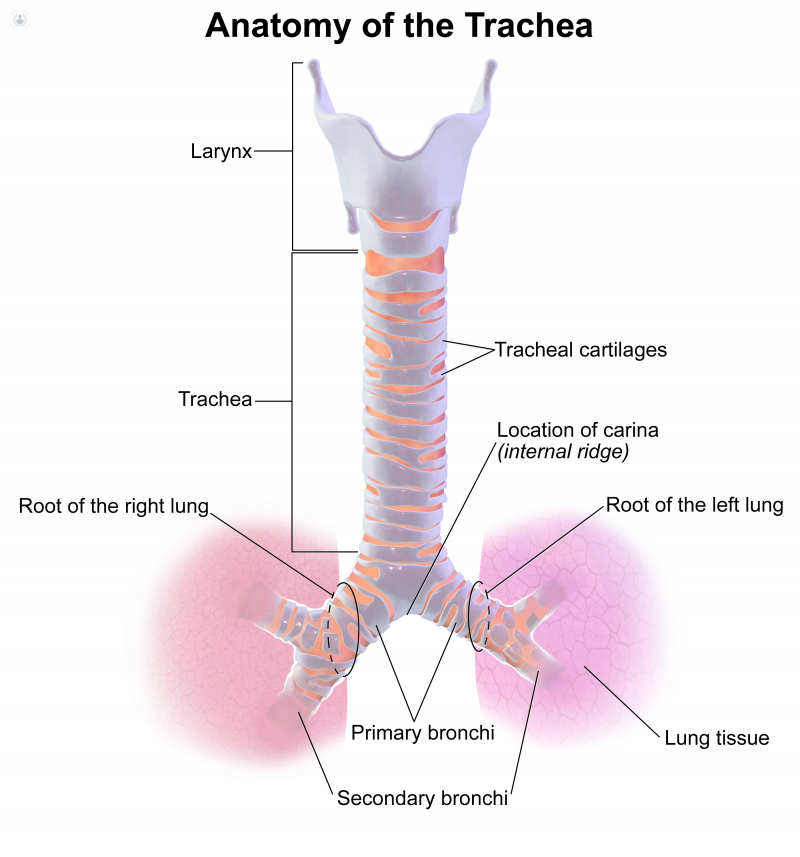Tracheal stenosis
Professor Reza Nouraei - Otolaryngology / ENT
Created on: 05-18-2017
Updated on: 04-11-2023
Edited by: Carlota Pano
What is tracheal stenosis?
Tracheal stenosis refers to a narrowing of the trachea, more commonly referred to as the windpipe. It occurs as a result of the formation of scar tissue in the trachea, or due a malformation of the cartilage in the trachea. The narrowing, if mild in nature, may not be noticed, but if the narrowing becomes more severe (over 50 per cent of the airway) then complications are likely to occur.

What causes tracheal stenosis?
Tracheal stenosis has three main causes:
- Inflammatory bowel disease
- Placement of a breathing tube (over a prolonged period of time)
- Collagen vascular disease
Other causes include congenital malformations, infections in the trachea, trauma to the trachea, radiotherapy, cancer, and certain inflammatory diseases such as sarcoidosis.
Symptoms of tracheal stenosis
If stenosis is mild and is congenital (e.g from birth), then symptoms may not be identifiable or obvious until later in life. They can, however, be similar to those of asthma or bronchitis. You may notice wheezing while inhaling, and in more serious cases, the following symptoms may present:
- A blue tinge to the lips
- A high-pitched breathing sound
- Feeling excessively short of breath
If the stenosis is caused by injury to the trachea, these symptoms may not present until several weeks after the original trauma.
How is tracheal stenosis treated?
There are various treatment methods used in the management of tracheal stenosis, but most cases are treated through endoscopy, where a long thin tube with a light and camera on the end is inserted into your trachea so the surgeon can have a good view of the obstruction.
In milder stenosis, a stent may be placed, and some of the scarring can be removed through laser treatment.
However, in cases of more severe stenosis, a procedure called tracheal resection may be recommended. In this procedure, the part of the trachea affected is removed and tissue is taken from another part of the body (e.g the cheek) to repair the trachea.
Which specialist treats tracheal stenosis?
Typically, otolaryngologists (ENT doctors), who are specialists in conditions affecting the ear, nose and throat, treat tracheal stenosis.


